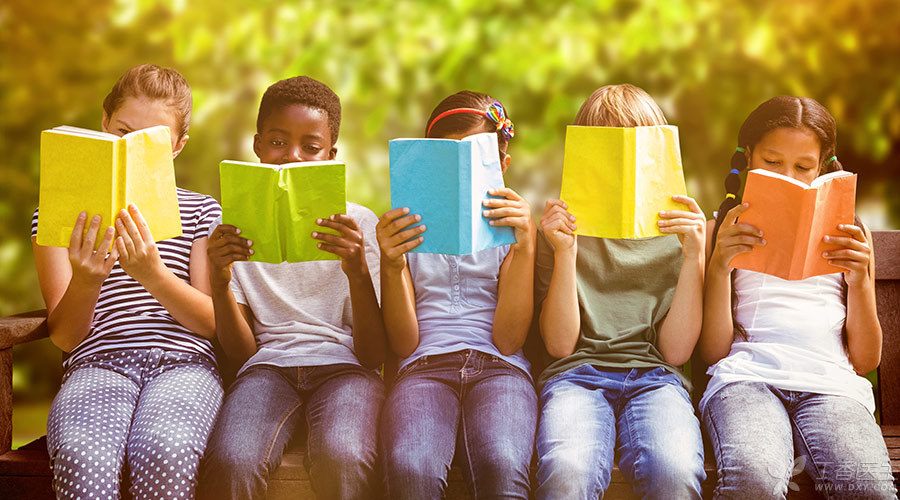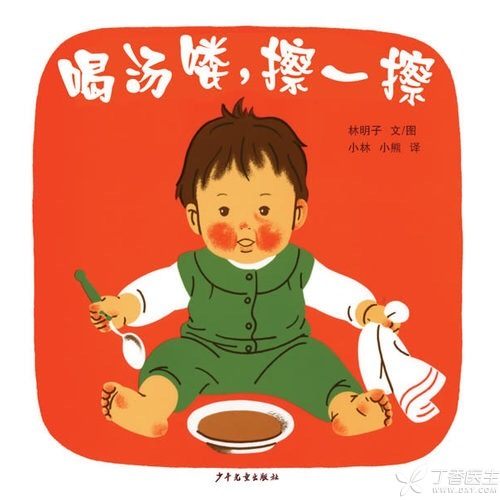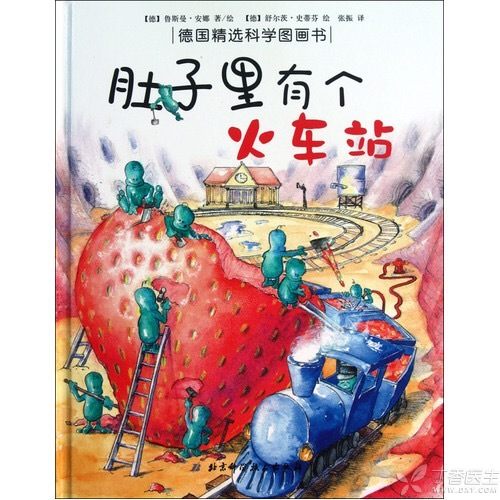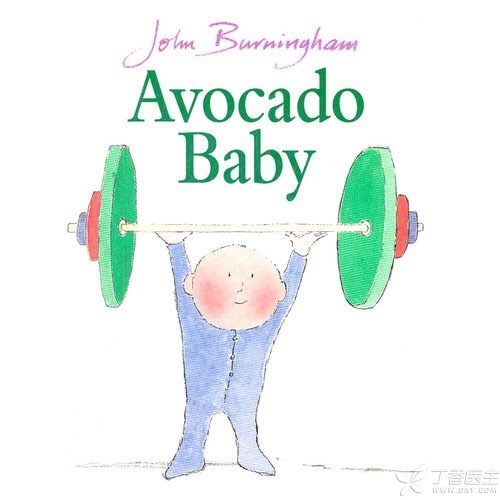
The old man used to use [seeing the wind grow long] to describe the rapid growth of the newborn baby, to the effect that as long as the wind is blowing, the baby is desperately growing.
Yes, the ignorant little meat ball as big as Xiao Mao, which used to be soft and glutinous in his hand, was able to turn over and sit down in an instant, then climbed and walked, and began to babble and learn to speak…
People have to lament the beauty of life and the magic of nature.
As companions and witnesses of children’s growth, parents must be gratified, but at the same time, novice parents probably need [growing pains].
For example, what if the child refuses to eat? Baby don’t want to brush your teeth how to coax? How can I teach myself that I can’t wear clothes and go to the toilet? How can it break if you don’t sleep when it’s time?
Don’t worry, there is one [artifact] that can help you. This [artifact] is-picture book!
Finding the right picture book, [prescribing the right medicine], not saying [medicine to cure the disease], is also of great help to novice parents to help their babies establish good living habits.
In this issue, let’s start with [eating].
Which painting instincts make babies eat better?
There are many kinds of living habits in this city, such as the “Little Bear” series and the “scratching” series. There are also many single picture books about eating.
Due to space constraints and following the principle of “eating too much but not too bad”, here, only a few typical books are listed for parents’ reference.
1. < < Drink soup! Wipe it > >
Function: Guide young babies to learn to eat independently,
Suitable age: 1 +

The plot is very simple in a picture book. A little baby drinks soup with rabbits, mice and bears. The animals spill the soup on their stomachs, hands and feet. The little baby wipes them clean. Finally, the little baby touches the soup on the edge of his mouth and his mother wipes it clean for him.
This is a picture book of cognitive enlightenment and life enlightenment suitable for children aged one or two. It can recognize animals and body parts, help babies to form the hygiene habit of wiping their mouths after meals, and guide babies to learn to eat independently.
2. < < There is a railway station in my stomach > >
Role: Help Children Develop Healthy and Regular Eating Habits
Suitable age: 3 +

A creative and interesting picture book, little girl Julia ate too much and too fast, killing the elves in her belly!
The elves had to work hard at the risk of being knocked unconscious by the food so as to carry the food Julia had eaten to the train and into the winding tunnel.
However, in addition to [heavenly] meals, they have to encounter snowstorms! The elves became angry, striking and marching, and the belly railway station became a mess…
This picture book can enable children to understand the composition and working principle of the digestive system in interesting and exciting stories, thus forming healthy and regular eating habits.
3. < < Avocado Baby > >
Function: Let children who are picky about eating but do not like eating fall in love with eating,
Suitable age: 3 +

The skinny Mrs. Ha family hopes that their newborn baby can grow into a strong person. However, it backfired. The baby is very picky about food. No matter Mrs. Ha is a what, he doesn’t like it.
On one occasion, the other children suggested [or give him some avocados? After that, the child turned out to be a powerful [avocado baby]. He could chase thieves and beat bad people…
This is one of the works by John Berningham, winner of the Kate Greenaway Award, Britain’s highest picture book award. Although the plot is simple, the story is full of imagination and the book is humorous and cheerful.
The picky baby avocado has become so severe after eating avocado that he wants to be a child of [baby avocado], but he must have a good meal!
How do I take my children to read picture books?
Picture books for the cultivation of living habits are generally more suitable for children aged 2-4 years old. Of course, like the [Baby Bear] series, < < drink soup! Wipe these picture books specially created for low-income children. You can show them to a one-year-old baby without any problem.
The prescription is well prescribed, and the medicine needs to be taken [according to the doctor’s advice]. How can I read picture books to my children when I buy them?
This issue uses this very simple < < to drink soup! Let’s take a wipe > > for example.
This picture book is small in size and not as big as two palms. It is very suitable for the baby to grasp by himself.
Before reading this picture book with the child, you can prepare a small towel for him to hold, and then prepare one rabbit, one mouse, one bear doll, four small plastic bowls and four small spoons to put the dolls opposite.
Of course, dolls and towels are props to increase the interest of parent-child reading and attract children’s attention. They are not necessary. They are the best. If not, you can read picture books directly.
Then we can begin.
One day, my mother made four bowls of soup.
At this time, you can use the form of asking questions to attract your baby’s attention:
Who are these four bowls of soup for?
The little rabbit drinks a bowl, the little mouse drinks a bowl, the little bear drinks a bowl, and there is a bowl, which is the baby’s!
At this time, you can identify the book while saying it, then take out small bowls and spoons and put them in front of the three dolls and the baby respectively.
Then, parents can play and add some guiding words on their own, such as:
You see, the little rabbit, the little mouse, the little bear and the baby in the book all drink their own soup! They all take their own spoons, isn’t it great? Can the baby also hold the spoon himself?
The little mouse is drinking soup! Oh, the little mouse spilled the soup on his stomach! What shall I do? Do you want to wipe him?
At this time, the baby will usually nod or answer [yes]!
Mom and Dad can say, will the baby take a towel and wipe the mouse? At the same time, he picked up the mouse doll and guided the baby to wipe the mouse’s stomach with a small towel.
Just like this, in a similar way, take the children and help other small animals wipe.
… …
Oh, who has touched the soup on his mouth now? It’s a baby! Can Mom wipe it for you?
Said, picked up a towel to wipe the baby’s mouth.
Can the baby wipe it himself?
Say that finish, give the towel to the baby and guide him to wipe his mouth.
Basically, after reading this picture book several times, it is time to eat:
-
Just say [drink soup, wipe it! ] Baby will pick up paper towels and wipe their mouths like conditioned reflex.
-
Speaking of [rabbits, bears and mice all take their own spoons], the baby will also grab his own spoons very actively.
How do you read other picture books?
There may also be mothers who will be confused. I’d like to summarize the suggestions for reading such picture books with my children.
Step 1 Attract your baby’s attention
The baby’s attention can easily be diverted to other places and can’t persist in paying attention to the same thing for a long time. When parents talk about picture books, they can tell them in a slightly higher and changing tone, and from time to time ask a simple question to let the baby participate.
2. Make your baby feel interesting
Although parents intend to cultivate the baby’s behavior habits in eating, I’m afraid the effect will not be good if they just preach and instill. You can make the baby interested in the story first, and then perform some [performances] in the key parts so that the baby can take the initiative to accept and form the habits.
3. Do [Repeat] Work Seriously
In the above introduction, due to space constraints, I have skipped some repetitive parts, but they are very important.
In the process of learning new things, one of the most important methods is [repetition]:
- In a story repetition, the baby will discover the commonness and difference by himself, thus learning a new word or a new behavior. In the repetition of the story over and over again, the baby will gradually remember the characters and plot of the story and learn a series of fresh words.
Therefore, don’t be perfunctory just because you think [everything has been said again]. Take it seriously every time.
